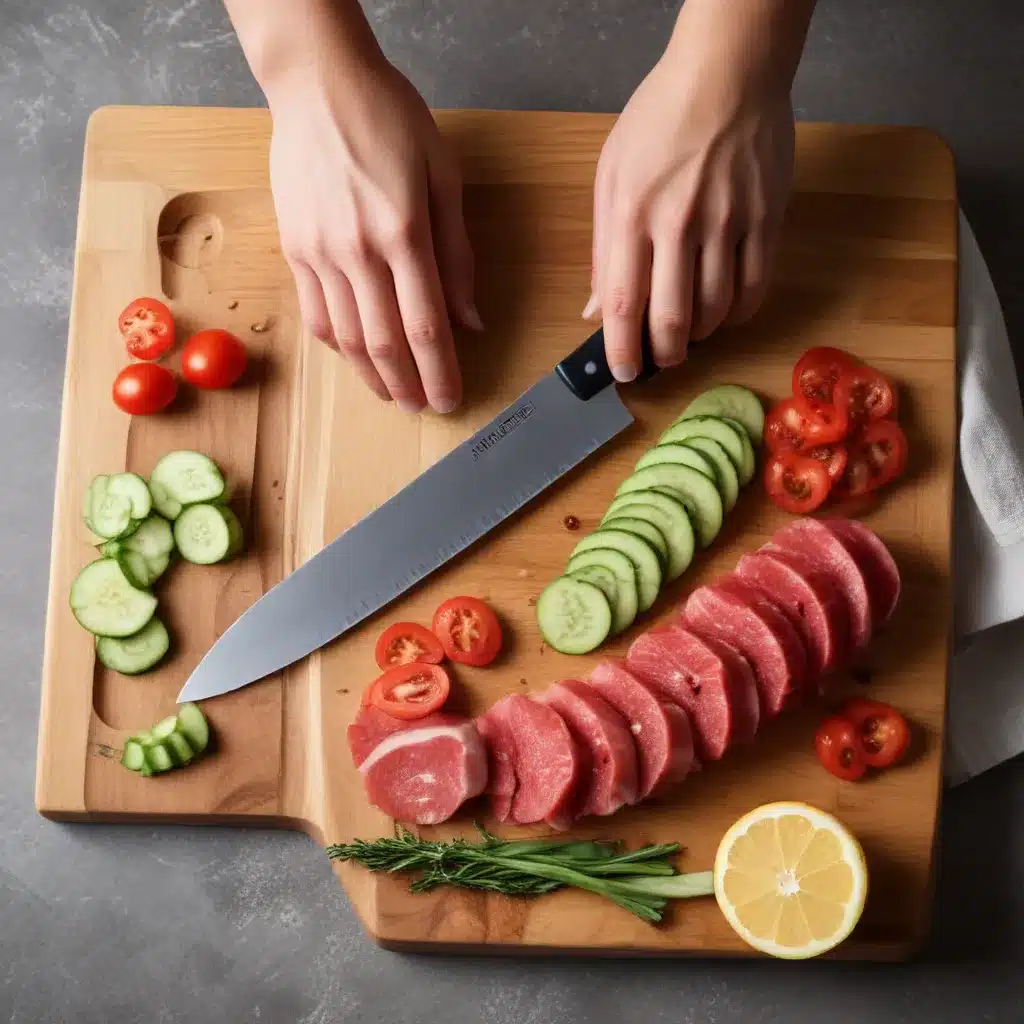
Mastering the Art of Cutting: Fundamental Knife Skills
As a seasoned culinary professional, I’ve witnessed firsthand the transformative power of proper knife skills. The ability to wield a knife with precision and efficiency can be the difference between a mediocre dish and a culinary masterpiece. In this comprehensive guide, we’ll delve into the essential knife skills that every home cook and professional chef should cultivate to elevate their cooking game.
The Importance of Knife Skills
Knife skills are not merely a trivial aspect of cooking; they are the foundation upon which all great dishes are built. When you master the art of slicing, dicing, and mincing, you unlock a world of flavor and textural possibilities. By cutting ingredients into uniform pieces, you ensure even cooking and enhanced absorption of flavors. As noted by the Redditor in the r/AskCulinary thread, cutting foods into smaller pieces increases the surface area exposed to moisture, allowing for more efficient flavor transfer to the palate.
The Essential Knife Cuts
To become a true kitchen warrior, you must familiarize yourself with the fundamental knife cuts. These include:
-
Slicing: The art of creating thin, even pieces, often used for vegetables, fruits, and proteins. Proper slicing technique ensures consistent cooking and presentation.
-
Dicing: Transforming ingredients into small, uniform cubes, which are crucial for dishes like stews, sautés, and salads, where you want each bite to be a harmonious blend of flavors.
-
Mincing: Finely chopping ingredients, typically used for aromatic herbs, garlic, and ginger, to maximize their flavor and aroma throughout a dish.
-
Julienne: Cutting ingredients into long, thin strips, often used for creating elegant garnishes or adding texture to salads and stir-fries.
Mastering these basic knife cuts will empower you to tackle more complex culinary techniques with confidence and precision.
Choosing the Right Knife for the Job
Before we dive into the specifics of each technique, it’s essential to understand the importance of selecting the appropriate knife for the task at hand. The Washington Post article highlighted the importance of having the right tools for practicing knife skills, as it can significantly impact the quality and efficiency of your work.
Here’s a quick overview of some common kitchen knives and their best uses:
| Knife Type | Best Uses |
|---|---|
| Chef’s Knife | General-purpose cutting, slicing, dicing, and mincing |
| Paring Knife | Peeling, trimming, and detailed work |
| Serrated Knife | Cutting bread, tomatoes, and other soft-skinned produce |
| Santoku Knife | Versatile for slicing, dicing, and mincing |
| Boning Knife | Separating meat from bones and precise trimming |
Investing in a well-balanced, high-quality set of kitchen knives can make a world of difference in your ability to execute perfect knife cuts. Remember, the more comfortable and confident you feel with your knives, the more efficiently you’ll be able to prepare your ingredients.
Perfecting the Fundamentals: Step-by-Step Knife Techniques
Now that we’ve covered the importance of knife skills and the right tools for the job, let’s dive into the specific techniques that will elevate your culinary prowess.
Slicing Techniques
Proper slicing technique is essential for achieving consistent, even cuts that cook uniformly. Begin by positioning your non-dominant hand firmly on the ingredient, using your fingertips as a guide to maintain a straight, even slice. Apply gentle, controlled pressure as you guide the knife through the ingredient, keeping the blade parallel to the cutting board.
Dicing Techniques
Dicing requires a bit more precision and coordination. Start by slicing the ingredient into thin, even strips, then stack the strips and carefully cut perpendicular to the strips, creating uniform cubes. As demonstrated in the Jacques Pépin video, maintaining a consistent grip and fluid motion is key to achieving perfect dices.
Mincing Techniques
Mincing is all about taking those knife skills to the next level. When mincing garlic, herbs, or other aromatic ingredients, focus on using a rocking motion with your knife, keeping the blade in constant contact with the cutting board. As suggested in the r/AskCulinary thread, you can create an imaginary quarter-circle area to confine your mincing motions, ensuring uniform, finely chopped results.
Julienne Techniques
Julienning, or cutting ingredients into long, thin strips, requires a delicate touch and steady hand. Begin by slicing the ingredient into thin, even planks, then stack the planks and carefully cut them lengthwise into thin, matchstick-like strips. Maintaining a consistent width is crucial for achieving an elegant, visually appealing julienne.
Practicing and Perfecting Your Knife Skills
Becoming a true master of knife skills requires dedicated practice. As the Redditor in the r/AskCulinary thread mentioned, using alternative materials like Play-Doh or dense bread dough can be a great way to hone your techniques without wasting valuable ingredients.
Another option, as suggested in the Your Health Is On Your Plate article, is to practice on inexpensive, readily available produce like carrots, celery, or potatoes. This approach allows you to build muscle memory and refine your cutting skills without the pressure of preparing a full meal.
Remember, knife skills are a lifelong pursuit, and the more you practice, the more second nature these techniques will become. Embrace the process, be patient with yourself, and soon enough, your knife will feel like an extension of your own hand.
Elevating Your Cooking with Knife Skills
As a seasoned culinary professional, I can attest to the transformative power of exceptional knife skills. When you master the art of slicing, dicing, mincing, and julienning, you unlock a world of culinary possibilities. Uniform cuts ensure even cooking, while finely chopped ingredients infuse each bite with maximum flavor.
By honing your knife skills, you’ll be able to tackle more complex recipes with confidence, create visually stunning dishes, and ultimately, elevate the overall quality and enjoyment of your cooking. So, don’t be afraid to pick up that knife and start practicing – your taste buds will thank you.
For more tips, recipes, and kitchen inspiration, be sure to visit Kitchen Warrior – your go-to destination for all things culinary.


